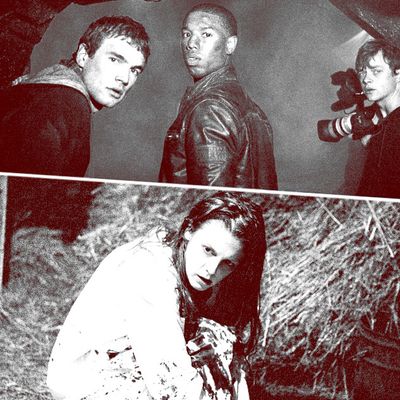
In 1999, Lloyd Rose of the Washington Post opened his review of The Blair Witch Project by saying, “The Blair Witch Project is the scariest movie I’ve ever seen. Not the goriest, the grossest, the weirdest, the eeriest, the sickest, the creepiest or the slimiest. Not the most haunting, most disturbing, most horrific, most violent, most beautiful, most dreamlike or most vile. Just flat out the scariest.” He said it surpassed even The Texas Chainsaw Massacre, Psycho, Carrie, and Jaws. Whether you agree that Blair Witch Project is scarier than Massacre is subjective, but the little indie’s place in film history is not — because just like those other horror classics, when Blair Witch Project came out, no one had ever seen anything like it before.
In a genre that sustains itself by recycling tropes and stereotypes, Blair Witch Project took viewers somewhere they had never been, through its use of found footage. There was a vaguely similar approach used in 1980’s Cannibal Holocaust, as well as in Man Bites Dog and Ghostwatch from 1992, but the handicam aesthetic pioneered by Blair Witch Project filmmakers Eduardo Sánchez and Daniel Myrick was a first of its kind. Rose concluded his review by comparing the movie to Orson Welles’s War of the Worlds radio broadcast that fooled America into thinking it was actually under siege by aliens. “Like that youthfully impetuous near-hoax, Myrick and Sanchez’s movie is a work that plays — with form, technical possibilities, audience expectations and the idea of a show as a magic trick.”
And as with any good cinematic magic trick, it spawned a generation of scary movies employing the same sleight of hand. The 1990s lacked the kind of distinct cinematic DNA that was clearly traceable in previous decades. In the post–WWII era there were creature features that played to America’s fear of the Other, like The Creature From the Black Lagoon (1954) and Them! (1954). The late 1960s through the 1970s saw boundary-pushing exploitation cinema like The Last House on the Left (1972) and The Texas Chainsaw Massacre (1974) emerge, and the 1980s were defined by the slasher. The ‘90s produced plenty of great horror, but it didn’t have a clear through-line. Then Blair Witch Project happened and found-footage horror exploded, utilizing newly accessible compact-video technology for the first time.
Now it’s 2016, and we have the direct sequel to Blair Witch Project, just called The Blair Witch. Over the past 17 years, dozens of movies have come out that have followed in the original film’s footsteps, with some managing to refine the found-footage form and create new takes on a heavily used, and sometimes abused, form of filmmaking. Before Tangerine was being shot on an iPhone, Blair Witch Project was being recorded with cameras anyone could buy at a RadioShack. Here is a look at the legacy of Blair Witch Project and the evolution of the cinematic style it perpetuated.


